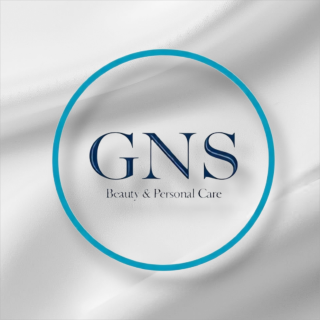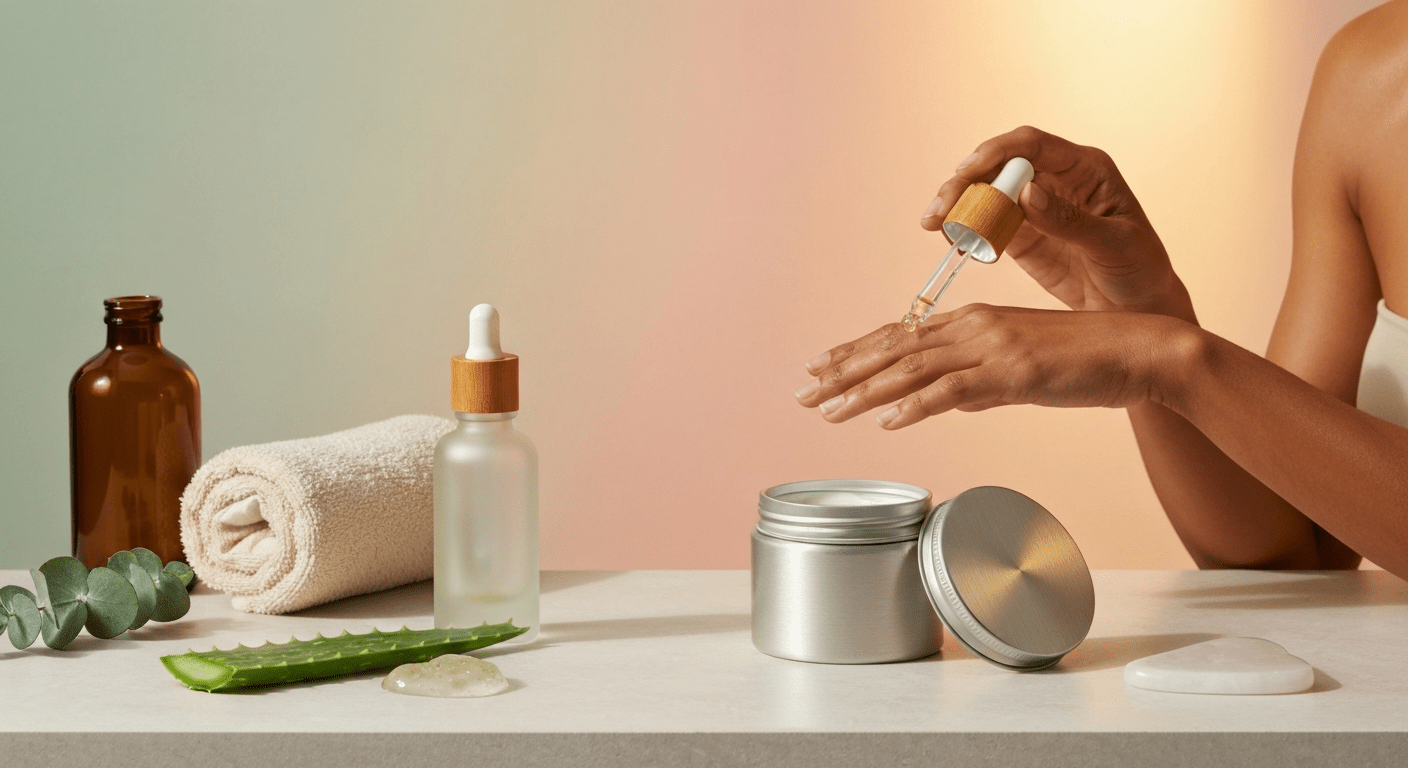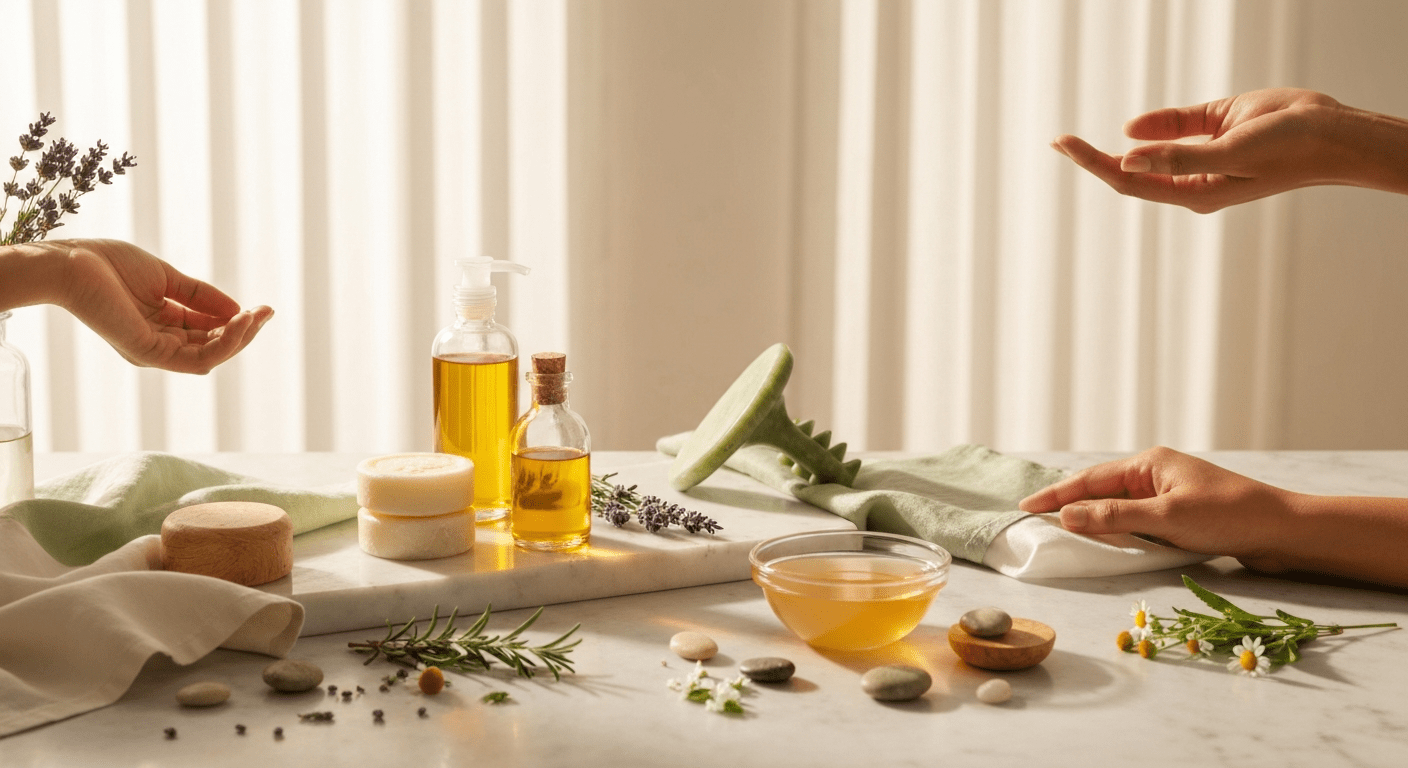Over 45 percent of new skincare launches in 2024 feature clean claims, highlighting just how rapidly clean beauty is reshaping the american market. Consumers are demanding not only safer ingredients but also real transparency about sourcing and manufacturing. As new standards emerge, understanding what truly qualifies as clean beauty can feel confusing. This guide will help you cut through the noise with clear facts and practical insights for making smarter, healthier choices.
Table of Contents
- Defining Clean Beauty Standards In 2025
- Ingredient Transparency And Formulation Rules
- Global Regulatory Trends And Certifications
- Sustainability And Eco-Conscious Packaging
- Navigating Compliance And Common Pitfalls
Key Takeaways
| Point | Details |
|---|---|
| Unified Clean Beauty Standards | Major retailers are collaborating to create consistent definitions for clean beauty, emphasizing ingredient transparency and ethical manufacturing. |
| Ingredient Transparency is Essential | Consumers now prioritize full ingredient disclosure and safety, impacting product selection and development. |
| Global Regulatory Trends | New global regulations mandate certifications like cruelty-free, vegan, and sustainable sourcing, enhancing consumer trust and product integrity. |
| Sustainable Packaging Innovations | Brands are adopting eco-conscious packaging solutions to reduce waste, such as biodegradable materials and refillable systems. |
Defining Clean Beauty Standards in 2025
The beauty industry is undergoing a transformative shift towards more transparent and rigorous clean beauty standards in 2025. According to Vogue, major beauty retailers like Sephora, Ulta Beauty, and The Honest Company have collaborated to establish unified definitions that address previous inconsistencies in product labeling and ingredient assessment.
Key characteristics of clean beauty standards now encompass more than just ingredient exclusion. These emerging standards focus on comprehensive product transparency, sustainable sourcing, and ethical manufacturing processes. As research from 360 Research Reports indicates, the clean beauty market has experienced remarkable growth, with over 45% of new skincare launches in 2024 incorporating ‘clean’ claims.
The new clean beauty framework typically includes several critical components:
- Ingredient Purity: Strict limitations on harmful chemicals like parabens, sulfates, and phthalates
- Ethical Sourcing: Transparent supply chains and responsible ingredient procurement
- Environmental Impact: Reduced carbon footprint and sustainable packaging solutions
- Cruelty-Free Certification: Mandatory verification of no animal testing
Consumers can now expect more reliable and consistent information when selecting clean beauty products. For more insights into making informed choices, explore our comprehensive guide on understanding clean beauty.
This evolving landscape represents a significant milestone in the beauty industry’s commitment to consumer health, environmental sustainability, and ethical production practices.
Ingredient Transparency and Formulation Rules
In the evolving landscape of clean beauty, ingredient transparency has become the cornerstone of consumer trust and product integrity. According to Personal Care Insights, a groundbreaking 2025 report by the National Sanitation Foundation revealed that 74% of consumers now prioritize organic ingredients in personal care products, signaling a profound shift in how people evaluate and select their beauty essentials.
The new formulation rules are comprehensive and multifaceted, addressing not just ingredient safety but also environmental and ethical considerations. Ausmetics highlights the European Union’s progressive stance, implementing a phased ban on microplastics in cosmetics. This regulation will phase out rinse-off products by 2027 and leave-on products by 2029, compelling brands to fundamentally reimagine their product development strategies.
Key principles of ingredient transparency in 2025 include:
- Full Disclosure: Complete listing of all ingredients with clear, scientifically accurate descriptions
- Chemical Safety: Rigorous screening for potential endocrine disruptors and carcinogenic compounds
- Molecular Traceability: Detailed origin information for each ingredient
- Sustainability Metrics: Carbon footprint and ecological impact of ingredient sourcing
For consumers seeking deeper understanding, we recommend exploring our comprehensive guide on understanding clean beauty, which provides insights into navigating these complex new standards.
This transformation represents more than a trend—it’s a fundamental reimagining of beauty product development, placing consumer health, environmental stewardship, and scientific integrity at the forefront of innovation.

Global Regulatory Trends and Certifications
The landscape of clean beauty is rapidly evolving, with global regulatory frameworks becoming increasingly sophisticated and consumer-focused. Ausmetics highlights the European Union’s progressive approach, exemplified by their comprehensive ban on microplastics in cosmetics, which represents a significant milestone in environmental and consumer protection regulations.
Cosmetics Design Europe reports that the beauty industry is witnessing a remarkable shift in certification standards, particularly in regions like the Middle East. These emerging global certification trends are not just marketing tools but critical indicators of product integrity and ethical production.
Key global certification standards in 2025 now encompass:
- Halal Certification: Ensuring products meet Islamic dietary and ethical guidelines
- Vegan Verification: Comprehensive screening for animal-derived ingredients
- Cruelty-Free Authentication: Mandatory third-party testing to confirm no animal testing
- Organic Ingredient Validation: Rigorous traceability and purity standards
- Sustainable Sourcing Certification: Detailed assessment of environmental and social impact
For consumers seeking deeper understanding of these complex certification processes, our comprehensive guide on understanding clean beauty provides invaluable insights into navigating these evolving standards.
This regulatory transformation represents a pivotal moment in the beauty industry, where consumer safety, environmental responsibility, and ethical production are becoming the fundamental benchmarks for product development and market acceptance.
Sustainability and Eco-Conscious Packaging
Eco-conscious packaging has become a critical imperative in the beauty industry, addressing the massive environmental challenge of packaging waste. Positive Luxury reports a staggering statistic: the beauty industry generates over 120 billion packaging pieces annually, with 95% remaining unrecycled. This alarming figure has propelled brands like Aveda to take transformative action, implementing 100% post-consumer recycled PET packaging and saving approximately 600 tonnes of virgin plastic each year.
Cosmetics Design Europe highlights how sustainable packaging is no longer a trend but a standard, particularly driven by younger consumers and evolving market regulations. The shift encompasses more than material selection, integrating innovative approaches that fundamentally reimagine product design and environmental impact.
Key innovations in sustainable packaging now include:
- Biodegradable Materials: Packaging that naturally decomposes without environmental harm
- Refillable Systems: Designs enabling multiple product refills from a single container
- Minimalist Packaging: Reducing overall material consumption
- Carbon-Neutral Manufacturing: Comprehensive lifecycle assessment of packaging production
- Water-Soluble Packaging: Innovative materials that dissolve completely after use
For deeper insights into sustainable packaging strategies, explore our comprehensive guide on understanding sustainable packaging.
This packaging revolution represents a profound commitment to environmental stewardship, transforming beauty industry practices from potential ecological burden to regenerative solution.

Navigating Compliance and Common Pitfalls
Compliance in the clean beauty industry has evolved into a sophisticated, multi-dimensional challenge requiring strategic navigation. ArXiv introduces the innovative BeautyGuard system, a groundbreaking multi-agent approach designed to proactively ensure compliance with legal, ethical, and reputational standards in beauty technology. This system represents a quantum leap in addressing complex rule-checking and risk mitigation challenges.
Moreover, emerging technologies bring nuanced ethical considerations. ArXiv highlights critical psychological implications, particularly regarding AI-driven assessment tools. The 2025 study reveals profound connections between technological interventions and psychological well-being, demonstrating how technological design can inadvertently impact consumer self-perception and emotional health.
Common compliance pitfalls to vigilantly avoid include:
- Ingredient Misrepresentation: Failing to accurately disclose all product components
- Unverified Marketing Claims: Making unsupported performance or benefit statements
- Inconsistent Certification: Misalignment between claimed and actual product standards
- Data Privacy Violations: Improper handling of consumer information
- Algorithmic Bias: Perpetuating discriminatory design in technological tools
To develop a comprehensive understanding of navigating these complex standards, consult our guide on understanding clean beauty standards.
This evolving landscape demands continuous education, technological awareness, and a commitment to ethical innovation that prioritizes consumer well-being over narrow commercial interests.
Discover Clean Beauty That Meets 2025 Standards Today
Navigating the evolving world of clean beauty can be challenging with new ingredient transparency rules, ethical sourcing, and eco-conscious packaging redefining the market. If you want to avoid misleading claims and choose products that truly embrace these rigorous standards such as cruelty-free certification and sustainable sourcing, you are not alone. It is more important than ever to shop from trusted sources that prioritize your health and the planet.

Elevate your personal care routine with GNS Beauty & Personal Care. Our curated collection features premium, eco-conscious products designed for wellness-savvy individuals who value transparency and integrity. Learn more about how to make informed choices in our comprehensive guide on understanding clean beauty and explore innovative solutions for sustainable living with our guide on sustainable packaging. Take the next step toward confident, responsible self-care by visiting GNS Beauty now and experience beauty standards that truly align with your values.
Frequently Asked Questions
What defines clean beauty standards in 2025?
Clean beauty standards in 2025 focus on ingredient purity, ethical sourcing, environmental impact, and cruelty-free certification. They aim for comprehensive product transparency and sustainability in manufacturing processes.
How can consumers identify clean beauty products?
Consumers can identify clean beauty products by looking for clear ingredient lists, certifications like cruelty-free and vegan, and claims of sustainable sourcing. Understanding labels and researching brands are crucial steps.
What are the key principles of ingredient transparency?
Key principles of ingredient transparency include full disclosure of ingredients, rigorous screening for harmful substances, molecular traceability, and sustainability metrics that highlight environmental impact.
Why is sustainable packaging important in the clean beauty industry?
Sustainable packaging is crucial because it addresses the environmental challenge of packaging waste. With most beauty packaging not being recycled, adopting eco-conscious designs helps reduce the industry’s ecological footprint.
Recommended
- Understanding Clean Beauty: A Beginner’s Guide
- Top Natural Beauty Brands for 2025 – Expert Comparison
- 7 Examples of Clean Beauty Brands You Should Know
- How to Shop for Clean Beauty Naturally Online: Step-by-Step
- The Ultimate Guide to Clean & Musky Perfumes: The ‘That Girl’ Scent Ed
- Organic Hair Conditioner: Everything You Need to Know | MyHair








Hinterlasse einen Kommentar
Alle Kommentare werden vor der Veröffentlichung geprüft.
Diese Website ist durch hCaptcha geschützt und es gelten die allgemeinen Geschäftsbedingungen und Datenschutzbestimmungen von hCaptcha.